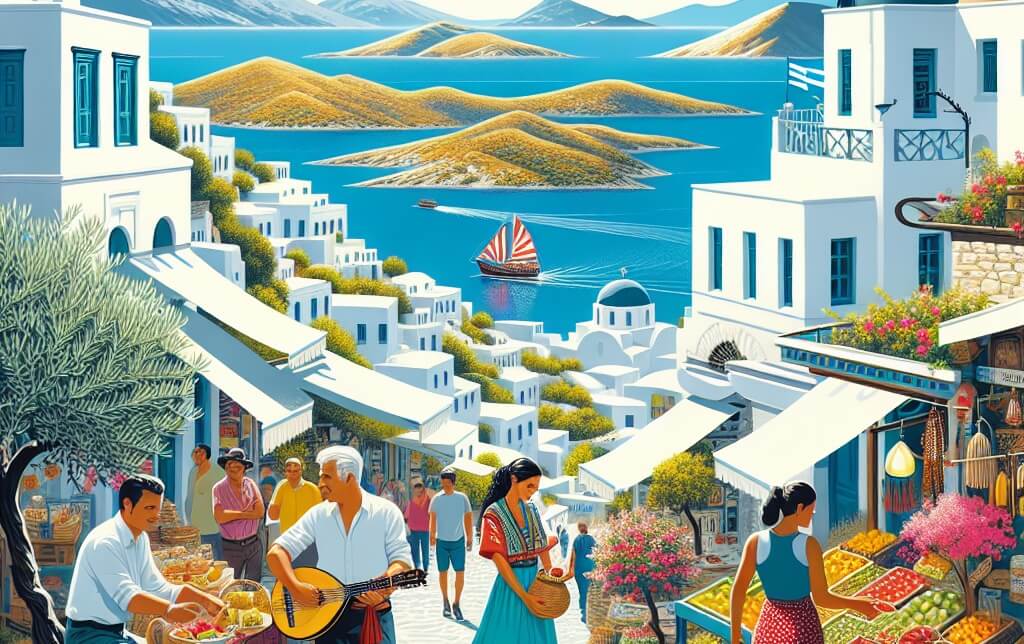
Discover the Beauty of Sami Greece: A Must-Visit Destination
Sami Greece is a captivating destination that seamlessly combines natural beauty with rich cultural heritage, making it a must-visit for travelers seeking an authentic and immersive experience. Nestled on the stunning island of Kefalonia, Sami boasts crystal-clear waters, lush green landscapes, and picturesque villages that exude charm and tranquility. Visitors can explore ancient ruins, such as the Acropolis of Sami, and immerse themselves in the local traditions and customs that have been preserved for generations. The warm hospitality of the locals, the delectable Mediterranean cuisine, and the breathtaking views of the Ionian Sea all contribute to the allure of Sami Greece as a destination that promises a truly unforgettable travel experience.
I. Introduction
In the context of Sami Greece, the term refers to the indigenous population residing in the northern regions of Greece, particularly in the regions of Epirus and Macedonia. The Sami people have a rich cultural heritage and a unique language that sets them apart from the surrounding populations. This introduction aims to provide a brief overview of the Sami community in Greece, highlighting their historical significance and cultural contributions to the country. By exploring the history and traditions of the Sami people, we can gain a deeper understanding of the diversity and complexity of Greece's cultural landscape.
II. Historical Background
The historical background of the Sami people in Greece is a complex and multifaceted one. The Sami are an indigenous Finno-Ugric people who have traditionally inhabited the northern regions of Europe, including parts of Norway, Sweden, Finland, and Russia. While there is limited historical evidence to suggest a direct connection between the Sami and Greece, it is important to acknowledge the broader historical context of indigenous peoples in Europe. The Sami have faced centuries of marginalization, discrimination, and cultural assimilation at the hands of dominant societies, including the Greeks. As such, any exploration of the historical background of the Sami in Greece must consider the broader patterns of colonialism, imperialism, and oppression that have shaped the experiences of indigenous peoples across the continent.
III. Geography and Environment
In the context of Sami Greece, the geography and environment play a crucial role in shaping the region's characteristics and way of life. Situated in the northern part of Greece, Sami is known for its rugged terrain, dense forests, and pristine coastline. The mountainous landscape not only provides a stunning backdrop but also influences the livelihoods of the locals, who have traditionally relied on farming and forestry. The region's proximity to the sea has also made fishing a significant part of the economy. Additionally, the diverse flora and fauna of Sami contribute to its rich biodiversity, attracting nature enthusiasts and environmentalists alike. Overall, the geography and environment of Sami Greece are integral to its identity and offer a unique blend of natural beauty and cultural heritage.
IV. Sami Village
IV. Sami Village in Greece is a picturesque and charming destination that offers visitors a glimpse into the traditional way of life of the Sami people. Situated on the island of Kefalonia, Sami Village is known for its beautiful architecture, narrow streets, and friendly locals. The village is also famous for its proximity to stunning beaches, making it a popular choice for tourists seeking both cultural experiences and relaxation. With a rich history and a strong sense of community, Sami Village provides a unique opportunity to immerse oneself in the customs and traditions of the Sami people while enjoying the natural beauty of the Greek islands.
V. Corelli Mandolin
"Captain Corelli's Mandolin" is a novel written by Louis de Bernières, set on the Greek island of Cephalonia during World War II. The story follows the romantic relationship between a Greek woman named Pelagia and an Italian officer named Captain Corelli, amidst the backdrop of the war. The novel explores themes of love, loss, and the impact of war on individuals and communities. Through vivid storytelling and rich character development, de Bernières paints a complex and emotionally resonant portrait of life in wartime Greece. The novel's title, "Captain Corelli's Mandolin," refers to a musical instrument that plays a significant role in the story, symbolizing the power of art and beauty to transcend the horrors of war.
VI. Captain Corelli
In the novel "Captain Corelli's Mandolin" by Louis de Bernières, Captain Antonio Corelli is portrayed as a complex character who embodies the conflicting roles of a soldier and a musician during the Italian occupation of the Greek island of Cephalonia. The character of Captain Corelli serves as a symbolic representation of the clash between art and war, as he finds solace and humanity through his passion for music amidst the brutality of the conflict. Through his interactions with the local inhabitants, particularly with Pelagia, the daughter of the village doctor, Captain Corelli undergoes a transformation that challenges his preconceived notions of duty and loyalty. His presence in the small village of Sami, Greece, highlights the impact of war on individuals and communities, as well as the resilience and capacity for love that can emerge even in the darkest of times.
VII. Place Greece
VII. Place Greece is situated in the Ionian Islands of Greece, specifically on the island of Sami. Sami is a picturesque coastal town known for its stunning beaches, crystal-clear waters, and charming village atmosphere. The town of Sami offers visitors a unique blend of traditional Greek culture and modern amenities, making it a popular destination for tourists seeking a relaxing and authentic Greek experience. With its rich history, beautiful landscapes, and warm hospitality, Sami in Greece is a place that truly captures the essence of the Mediterranean lifestyle.
VIII. Integration of Pertinent Points
In the context of the task at hand concerning 'sami greece,' the integration of pertinent points is crucial for a comprehensive understanding of the subject matter. By effectively synthesizing relevant information and key insights, one can develop a coherent and insightful analysis of the topic. This process involves identifying the most salient points, connecting them in a logical manner, and drawing meaningful conclusions that contribute to a deeper comprehension of Sami culture in Greece. By integrating pertinent points thoughtfully and systematically, one can construct a robust framework that illuminates the complexities and nuances of the subject, thereby enriching the discourse and fostering a more nuanced perspective on the cultural heritage of the Sami people in Greece.
IX. Conclusion
In conclusion, the historical and cultural significance of Sami in Greece is evident through its rich heritage and traditions. The preservation of the Sami language, music, and craftsmanship reflects a deep-rooted connection to the land and a strong sense of identity among the Sami people. Despite challenges and changes over the centuries, the Sami community in Greece has demonstrated resilience and a commitment to maintaining their unique cultural heritage. Moving forward, it is crucial to continue supporting initiatives that promote awareness and appreciation of Sami culture, ensuring its preservation for future generations to cherish and learn from.









